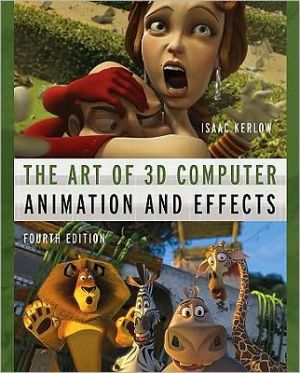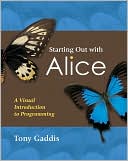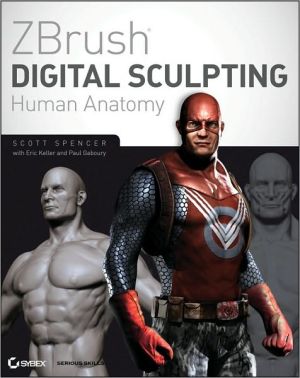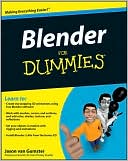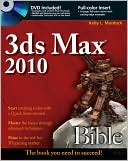The Art of 3D Computer Animation and Effects
Master the art of computer animation and visual effects production with the latest edition of this cutting-edge guide\ This remarkable edition of The Art of 3D Computer Animation and Effects offers clear, step-by-step guidelines for the entire process of creating a fully rendered 3D computer animation. With up-to-date coverage of the latest computer animation styles and techniques, this versatile guide provides insightful information for creating animations and visual effects—from creative...
Search in google:
Master the art of computer animation and visual effects production with the latest edition of this cutting-edge guide This remarkable edition of The Art of 3D Computer Animation and Effects offers clear, step-by-step guidelines for the entire process of creating a fully rendered 3D computer animation. With up-to-date coverage of the latest computer animation styles and techniques, this versatile guide provides insightful information for creating animations and visual effects—from creative development and preproduction to finished animation. Designed to work with any computer platform, this Fourth Edition cuts through technical jargon and presents numerous easy-to-understand instructivediagrams. Full-color examples are presented—including VFX and animated feature movies, games, and TV commercials—by such leading companies as Blue Sky, Blur, BUF, Disney, DreamWorks, Electronic Arts, Framestore, ILM, Imagi, Microsoft, Mac Guff, The Mill, Menfond, Pixar, Polygon, Rhythm & Hues, Sony Imageworks, Tippett, Ubisoft, and Weta, and many other studios and groundbreaking independent artists from around the world. This fully revised edition features new material on the latest visual effects techniques, a useful update of the traditional principles of animation, practical information on creative development, multiple production pipeline ideas for shorts and visual effects, plus updated information on current production trends and techniques in animation, rendering, modeling, rigging, and compositing. Whether you are a student, an independent artist or creator, or a production company team member, The Art of 3D Computer Animation and Effects, Fourth Editiongives you a broad palette of tips and techniques for bringing your visions to life through 3D computer animation.
SECTION I: INTRODUCTION. Chapter 1: Animation, Visual Effects, and Technology in Context. Summary. A Digital Creative Environment. The Development of the Technology. Visual Milestones: 1969-1989. Visual Milestones: 1990-Today. Timeline Charts. Key Terms. Chapter 2: Creative Development and the Digital Process. Summary. Storytelling. Character Design. Visual and Look Development. Production Strategies. The Digital Computer Animation Studio. Creative and Production Teams. The Production Process of Computer Animation. Getting Started. Key Terms. SECTION II: MODELING. Chapter 3: Modeling Concepts. Summary. Space, Objects, and Structures. Building with Numbers. Vertices, Edges, and Facets. Moving Things Around. File Formats for Modeling. Getting Ready. Key Terms. Chapter 4: Modeling Techniques. Summary. Introduction. Curved Lines. Geometric Primitives. Sweeping. Free-Form Objects. Basic Modeling Utilities. Real-Time Polygonal Models. Key Terms. Chapter 5: Advanced Modeling and Rigging Techniques. Summary. Free-form Curved Surfaces. Subdivision Surfaces. Logical Operators and Trimmed Surfaces. Advanced Modeling Utilities. Procedural Descriptions and Physical Simulations. Photogrammetry and Image-Based Modeling. Amination Rigging and Hierarchical Structures. Getting Ready. Key Terms. SECTION III: RENDERING. Chapter 6: Rendering Concepts. Summary. Lights, Camera, andMaterials. Color. Steps in the Rendering Process. Hidden Surface Removal. Z-Buffer. Ray Tracing. Global Illumination and Radiosity. Image-Based Rendering. Non-Photorealistic Rendering. Hardware Rendering. File Formats for Rendered Images. Getting Ready. Key Terms. Chapter 7: The Camera. Summary. Types of Cameras. The Pyramid of Vision. Types of Camera Shots. Types of Lenses. Camera Animation. Getting Ready. Key Terms. Chapter 8: Lighting. Summary. Lighting Strategies and Mood. Types of Light Sources. Basic Components of a Light Source. Lighting the Scene. Basic Positions of Light Sources. Getting Ready. Key Terms. Chapter 9: Shading and Surface Characteristics. Summary. Surface Shading Techniques. Surface Shaders and Multi-Pass Rendering. Image Mapping. Surface Reflectivity. Surface Color. Surface Texture. Surface Transparency. Environment-Dependent Shading. Selected Rendering Hacks. Getting Ready. Key Terms. SECTION IV: ANIMATION AND EFFECTS. Chapter 10: Principles of Animation. Summary. The Craft of Animation. The Twelve Principles. A Few More Principles. Character Development. Storyboarding. Getting Ready. Key Terms. Chapter 11: Computer Animation Techniques. Summary. Keyframe Interpolation and Parameter Curves. Forward Kinetics and Model Animation. Camera Animation. Light Animation. Hierarchical Character Animation. Two- and Three-Dimensional Integration. Animation File Formats. Getting Ready. Key Terms. Chapter 12: Advanced Computer Animation Techniques. Summary. Inverse Kinematics. Performance Animation and Motion Capture. Motion Dynamics and Fluid Simulations. Procedural Animation. Facial Animation. Crowd Animation. Location-Based and Interactive Entertainment. Key Terms. Chapter 13: Visual Effects Techniques. Rotoscoping. Blue and Green Screens and Chroma Keys. Set and Character Extensions. Crowd Replication. Computer-Generated Particles. Three-Dimensional Morphing. Motion Control. Motion Capture and Visual Characters. Photogrammetry. Practical Effects. Key Terms. SECTION V: POST-PROCESSING. Chapter 14: Retouching, Compositing, and Color Grading. Summary. Basic Concepts of Image Manipulation. Image Retouching. Image Compositing and Blending. Image Sequencing. Color Grading. Key Terms. Chapter 15: Image Resolution and Output. Summary. Basic Concepts of Digital Output. Image Resolution. Image File Formats and Aspect Ratios. Output on Paper. Output on Photographic Media. Output on Video. Output on Digital Media. Output on Three-Dimensional Media. Key Terms. Appendix. Index.
